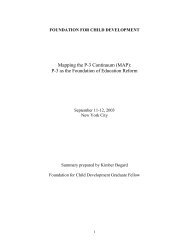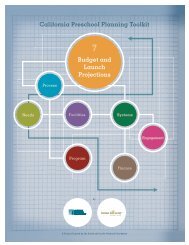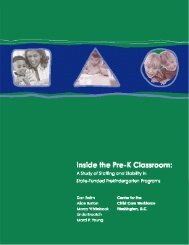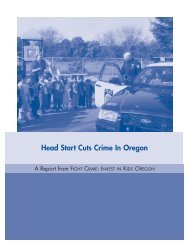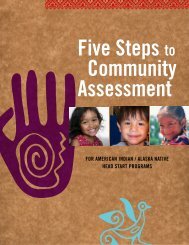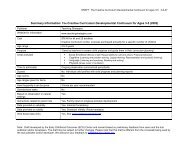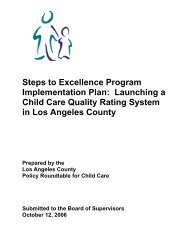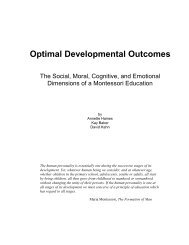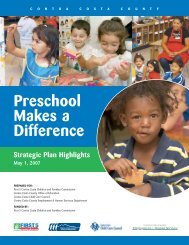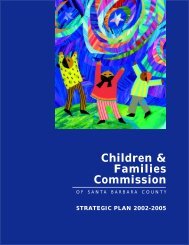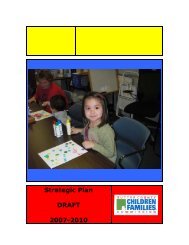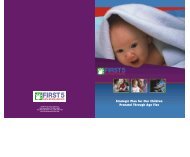Download this file - Plan4Preschool
Download this file - Plan4Preschool
Download this file - Plan4Preschool
Create successful ePaper yourself
Turn your PDF publications into a flip-book with our unique Google optimized e-Paper software.
Testing <br />
Standardized Testing and Reporting Program<br />
In 1997, Senate Bill 376 established the Standardized Testing and Reporting (STAR)<br />
Program. Beginning with the 1997-98 school year, the STAR Program required that all<br />
California public school students in grades two through eleven take a nationally normreferenced<br />
test each spring to measure achievement in basic academic skills. The test<br />
designated by the State Board of Education (SBE) for the first five years of the program<br />
was the Stanford Achievement Test, Ninth Edition, Form T (Stanford 9).<br />
In 1999, the legislature required that the State Superintendent of Public Instruction, with<br />
approval of the SBE, provide for the development of an assessment for grades two<br />
through eleven that would measure the degree to which students were achieving<br />
California’s content standards and required the inclusion of a direct writing assessment<br />
to be administered once in elementary school and once in middle school.<br />
In 2001, Senate Bill 233 reauthorized the STAR Program for three additional years<br />
(2003–2005). Following <strong>this</strong> reauthorization, the SBE designated the California<br />
Achievement Tests, Sixth Edition Survey (CAT/6 Survey) as the nationally normreferenced<br />
tests to replace the Stanford 9. In 2004, Senate Bill 1448 extended the<br />
program through 2010. This reauthorization required that the California Standards Tests<br />
(CSTs) in grades three through eleven be administered through January 1, 2011; that<br />
the CST in grade two be administered through January 1, 2008; and that the STAR<br />
Program’s norm-referenced test be administered only in grades three and seven<br />
through January 1, 2011.<br />
In 2005, Senate Bill 755 changed the requirements for students taking a designated<br />
primary language test. In addition to taking the designated STAR tests in English,<br />
Spanish-speaking English learners who either receive instruction in their primary<br />
language or have been enrolled in a school in the United States for less than 12 months<br />
are required to take a primary language test designated by the SBE.<br />
The current STAR Program has four components: the CSTs, criterion-referenced tests<br />
assessing the California content standards in mathematics, English-language arts,<br />
science, and history-social science; the CAT/6 Survey, a nationally norm-referenced<br />
test; the California Alternate Performance Assessment (CAPA), an alternate<br />
assessment to the CSTs that is designed to assess the performance of students with<br />
significant cognitive disabilities; and the Aprenda, La prueba de logros en español,<br />
Tercera edición (Aprenda 3), the designated primary language test in Spanish, a<br />
nationally norm-referenced test.<br />
All students, including English learners and students in special education programs,<br />
must take the CSTs in English. The CSTs in English–language arts and mathematics<br />
for grades two through eleven became part of the STAR Program in 1999. Standards<br />
37



